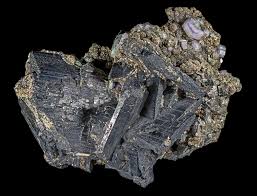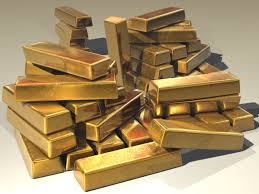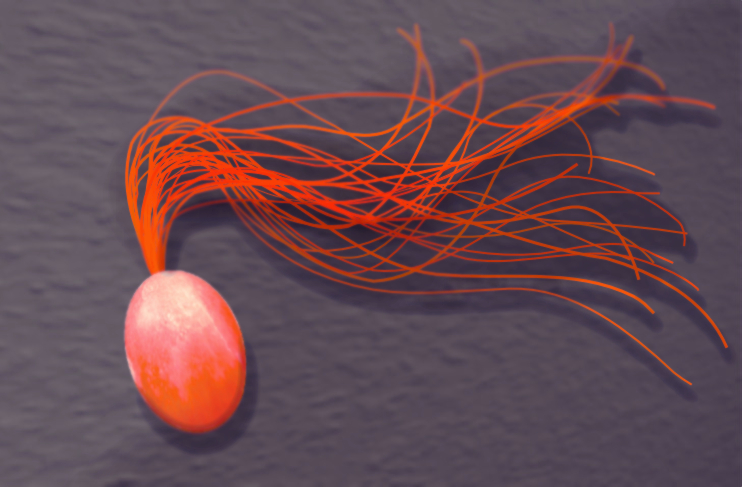


Clockwise from top left: A rod of tungsten, from Wikimedia Commons, tungsten as it appears in the periodic table, a european wolf (and a bad pun), from Wikimedia Commons
Another metal, tungsten! And a bit like barium before it, it almost exclusively appears in nature in compounds with other elements. A notable mineral is the swedish compound scheelite (tungsten bound to calcium and oxygen) named after chemist Carl Wilhelm Scheele. The substance was named tungsten by the Swedish, which translates to heavy stone due to its massive density, but we’ll get to that later.


Scheelite (left) and wolframite (right), the two famous tungsten minerals. From Wikimedia Commons.
The other famous tungsten compound is wolframite (tungsten bound to iron, manganese and oxygen), which derives from the latin “Lupi spuma“, meaning wolf’s froth. It is thought that this is because the mineral uses up a lot of tin to extract, similar to a wolf eating a sheep. More importantly for tungsten though, it is why the elemental symbol is a “W”.
Carl Wilhelm Scheele was part of the discovery of tungsten as an element. He found that scheelite could be made into an acid in 1781, whilst two years later Spanish brothers Juan José and Fausto Elhuyar made an acid from wolframite with the same properties (spoilers- they were both tungstic acid). Now if you reduce a metal acid (in chemistry reduction is a reaction that adds a negatively charged electron to a compound, thus “reducing” its charge), you will end up with the metal in its elemental form, and Scheele and the Elhuyar brothers knew this. But it was the brothers from Spain that did it first, and they named their newly discovered element wolfram. In fact, in German, Spanish and Slavic wolfram is still the word for tungsten, which itself is used in English and French.
The two biggest properties of tungsten are its very high density and its melting point. Tungsten has the highest melting point of all the stable elements except certain forms of carbon. This means it is used in many applications where heat resistance is needed- rocket nozzles, turbine blades, light bulb filaments, heating elements, and even bullets.
Tungsten is also incredibly dense. It has a very similar density to gold and is hypoallergenic (very unlikely to cause an allergic reaction), often leading to its use in jewellery. This similarity to gold also has a more criminal purpose- counterfeiting. Tungsten bars coated with gold is so much cheaper than the real thing, but also incredibly difficult to tell apart! The more enterprising criminals have even been known to “core” out the gold from the middle of gold bullion to then replace with tungsten rods.

There is one more fun use of tungsten for me to share with you, but it’s not by humans. Tungsten has been found to be used by some bacteria and archaea (microorganisms that are evolutionarily neither bacteria nor eukaryotes like animals, trees or fungi, but their own strange selves), making it the heaviest element that has been found to be used by life! The tungsten features in an enzyme, large protein molecules that act as catalysts for chemical reactions in the microbes. This enzyme in particular catalyses redox reactions, a portmanteau of reduction, the gaining of an electron, and oxidation, the loss of an electron. In short, these enzymes facilitate the passing of an electron from one chemical to another, and the tungsten is vital in achieving that as it is easily undergoes redox reactions. The enzyme is thought to be involved in respiration, the metabolic process used to provide energy for the organism. So tungsten helps these bacteria and archaea generate and store energy!

So there it is! The canine, archaeaic (sorry), criminal element that is tungsten. Shame it’s not wolfram in English too, but hey, you can’t have everything.
